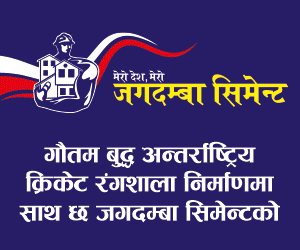Chitlang makes a comeback as tourist destination
Chitlang, an ancient trading route which linked Kathmandu with the rest of the country before the Tribhuvan Highway was built, has bounced back from the brink of becoming a no-go destination for tourists. Located in the southwest of the Kathmandu valley, Chitlang is gradually turning into a tourist hub, drawing over 1,000 domestic and foreign tourists every week.
Before the Tribhuvan Highway, also known as byroad, was built, Chitlang was a major trading route, with traders walking over the trails to enter the Valley. The foot trail that passes through Thankot, Chandragiri Pass, Chitlang and Kulekhani extends to the Indian border in the south. The ancient route with historical importance, however, lost its glory after the highway was built.
“But now Chitlang has made a comeback,” said Mani Raj Lamichhane, officiating director of Nepal Tourism Board (NTB). “After remaining isolated for five decades, the ancient valley has bounced back to cater to modern-day tourists.”
More than a dozen homestays and half a dozen resorts are currently in operation in Chitlang, while two new resorts are under construction. This indicates investors are pouring money into the tourism sector.
“It has become difficult to provide rooms for tourists on Fridays and Saturdays, due to influx of visitors,” said Ram Krishna Basnet, proprietor of Chitlange Kaji Homestay. “Since the last one year, demand for homestays has exceeded supply. This has raised the confidence of homestay operators, prompting them to build resorts.” “Every week, Chitlang receives over 1,000 visitors,” said Tara Bahadur Basnet, president of Homestays Operators Committee. Three years ago, Markhu village of Chitlang, located near the Kulekhani reservoir, was declared a “tourist village”.
Before the Tribhuvan Highway, also known as byroad, was built, Chitlang was a major trading route, with traders walking over the trails to enter the Valley. The foot trail that passes through Thankot, Chandragiri Pass, Chitlang and Kulekhani extends to the Indian border in the south. The ancient route with historical importance, however, lost its glory after the highway was built.
“But now Chitlang has made a comeback,” said Mani Raj Lamichhane, officiating director of Nepal Tourism Board (NTB). “After remaining isolated for five decades, the ancient valley has bounced back to cater to modern-day tourists.”
More than a dozen homestays and half a dozen resorts are currently in operation in Chitlang, while two new resorts are under construction. This indicates investors are pouring money into the tourism sector.
“It has become difficult to provide rooms for tourists on Fridays and Saturdays, due to influx of visitors,” said Ram Krishna Basnet, proprietor of Chitlange Kaji Homestay. “Since the last one year, demand for homestays has exceeded supply. This has raised the confidence of homestay operators, prompting them to build resorts.” “Every week, Chitlang receives over 1,000 visitors,” said Tara Bahadur Basnet, president of Homestays Operators Committee. Three years ago, Markhu village of Chitlang, located near the Kulekhani reservoir, was declared a “tourist village”.














